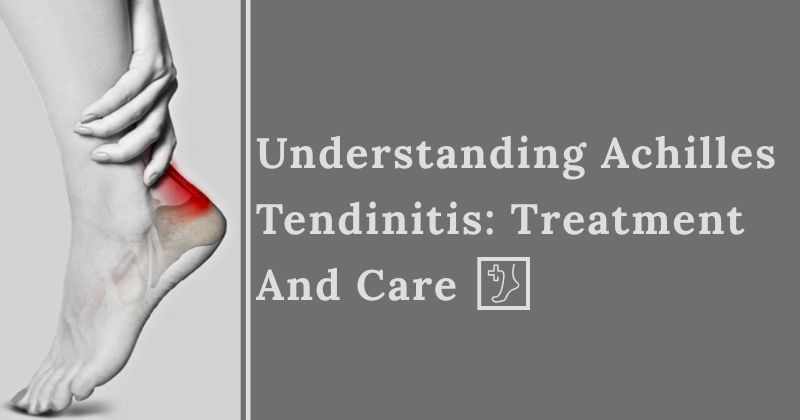Achilles tendinitis is a common condition that affects athletes and active individuals, as well as those who suddenly increase their physical activity. It involves inflammation of the Achilles tendon, the large tendon that connects the calf muscles to the heel bone. Understanding the causes, symptoms, and most importantly, the achilles tendinitis treatment options can help manage and recover from this painful condition effectively.
What is Achilles Tendinitis?
The Achilles tendon is the strongest and thickest tendon in the human body, but it is also prone to injury due to overuse or sudden stress. Achilles tendinitis occurs when this tendon becomes irritated and inflamed, typically causing pain and stiffness in the back of the ankle.
There are two primary types of Achilles tendinitis:
- Insertional Achilles Tendinitis – affects the lower portion of the tendon where it attaches to the heel bone.
- Noninsertional Achilles Tendinitis – affects the middle portion of the tendon, usually involving microscopic tears in the tendon fibers.
Both types can be debilitating, but they may require different approaches to care and healing.
Symptoms of Achilles Tendinitis
Recognizing the symptoms early is crucial for preventing further damage. Common signs include:
- Pain and stiffness along the Achilles tendon, especially in the morning or after periods of inactivity.
- Swelling or thickening around the tendon.
- Tenderness or soreness that worsens with activity.
- Limited range of motion in the ankle.
If left untreated, Achilles tendinitis can lead to tendon rupture, a serious injury requiring surgery. That’s why understanding effective achilles tendinitis treatment options is essential.
Causes and Risk Factors
Achilles tendinitis often develops from repetitive stress or sudden increases in physical activity. Some contributing factors include:
- Overtraining or increasing exercise intensity too quickly.
- Poor footwear or running on hard surfaces.
- Tight calf muscles or inadequate stretching.
- Biomechanical issues like flat feet or abnormal gait.
- Age-related degeneration of the tendon.
Achilles Tendinitis Treatment Options
Treatment typically begins with conservative, non-surgical approaches aimed at reducing inflammation and promoting healing. Here are some widely recommended achilles tendinitis treatment options:
1. Rest and Activity Modification
One of the first steps is to reduce or avoid activities that aggravate the tendon, such as running or jumping. Rest helps decrease inflammation and allows the tendon fibers to begin healing.
2. Ice Therapy
Applying ice packs to the affected area can help reduce swelling and pain. Ice sessions of 15-20 minutes every few hours during the initial acute phase can be very beneficial.
3. Nonsteroidal Anti-Inflammatory Drugs (NSAIDs)
Medications like ibuprofen or naproxen may be used to alleviate pain and inflammation. However, they should be used cautiously and under a healthcare provider’s guidance.
4. Physical Therapy
Physical therapy is often the cornerstone of recovery. A therapist can guide you through stretching exercises to improve flexibility, and strengthening exercises to rebuild tendon resilience. Eccentric calf exercises — where the calf muscle is slowly lengthened under load — have been shown to be particularly effective for Achilles tendinitis.
5. Orthotics and Footwear
Proper shoes with good arch support or custom orthotics can help correct biomechanical issues that contribute to tendon strain. Heel lifts may also be recommended to reduce stress on the Achilles tendon.
6. Extracorporeal Shockwave Therapy (ESWT)
In some cases, shockwave therapy is used to stimulate healing in the tendon. This non-invasive treatment sends sound waves to the damaged tissue to promote blood flow and tissue regeneration.
7. Injections
Corticosteroid injections are generally avoided due to the risk of tendon rupture but may occasionally be used under strict supervision. Platelet-rich plasma (PRP) injections are emerging as a promising treatment to enhance tendon repair, though more research is needed.
8. Surgery
Surgery is usually considered a last resort if conservative treatments fail after 6 months or more. Surgical options may involve removing damaged tissue or repairing torn tendon fibers.
Special Focus on Noninsertional Achilles Tendinitis Treatment
When dealing with noninsertional achilles tendinitis treatment, the approach is often slightly different than for insertional types due to the location and nature of tendon damage. Noninsertional tendinitis usually involves more widespread tendon degeneration and microscopic tears within the mid-portion of the tendon.
Key aspects of noninsertional achilles tendinitis treatment include:
- Emphasizing eccentric strengthening exercises that target the mid-tendon area.
- Avoiding exercises that place direct pressure on the back of the heel, such as heel drops with a bent knee, which might exacerbate the condition.
- Using modalities like ultrasound or laser therapy to enhance tissue healing.
- Considering shockwave therapy earlier in the treatment process for more stubborn cases.
NonInsertional tendinitis may take longer to heal due to the tendon’s poor blood supply in the mid-portion, making patience and adherence to rehabilitation critical.
Prevention Tips for Achilles Tendinitis
Prevention is always better than cure. To reduce the risk of developing Achilles tendinitis:
- Warm up thoroughly before exercise.
- Gradually increase training intensity and duration.
- Incorporate stretching and strengthening exercises for the calf muscles.
- Wear supportive footwear suitable for your activity and foot type.
- Avoid sudden changes in running surfaces or routines.
When to See a Doctor
If pain persists beyond a few weeks or worsens despite rest and self-care, it’s important to consult a healthcare professional. Early intervention can prevent progression and complications. Imaging tests like ultrasound or MRI may be needed to assess tendon damage.
Final Thoughts
Achilles tendinitis can be a challenging condition, but with proper knowledge and treatment, most people recover fully. Whether you’re exploring achilles tendinitis treatment options or specifically managing noninsertional achilles tendinitis treatment, the key lies in early recognition, appropriate care, and a commitment to rehabilitation.
If you’re experiencing persistent Achilles tendon pain, don’t ignore it—take action today to ensure your tendon stays healthy and strong for the long run.
For More (Click Here)



